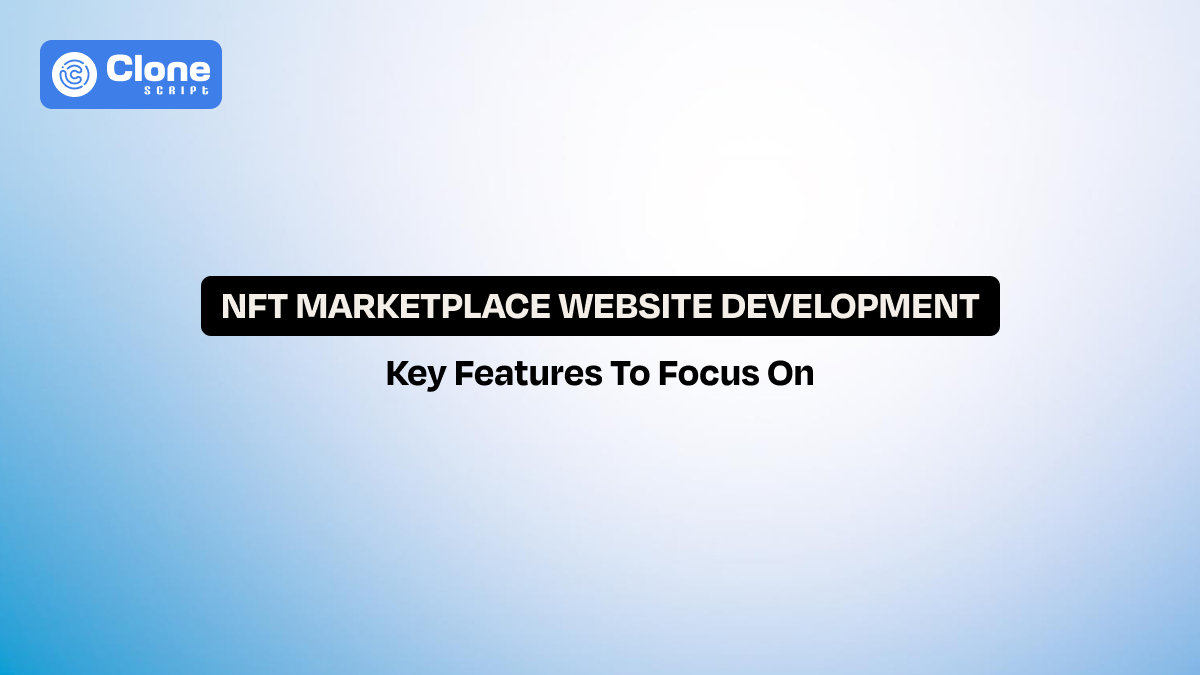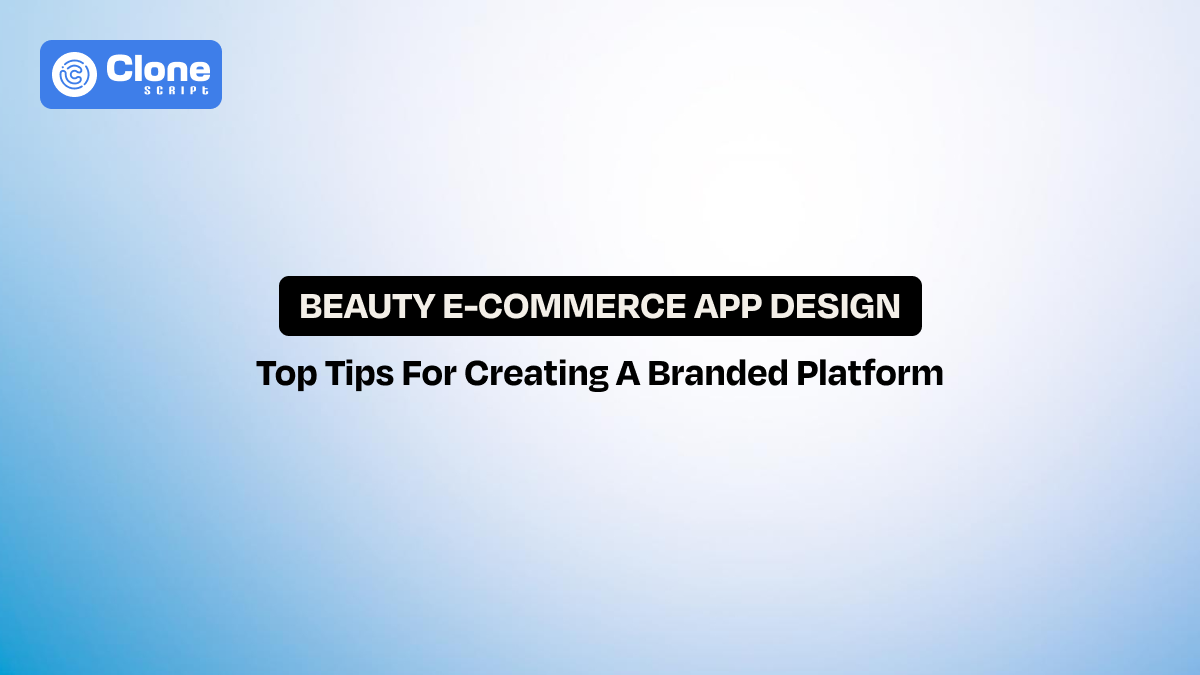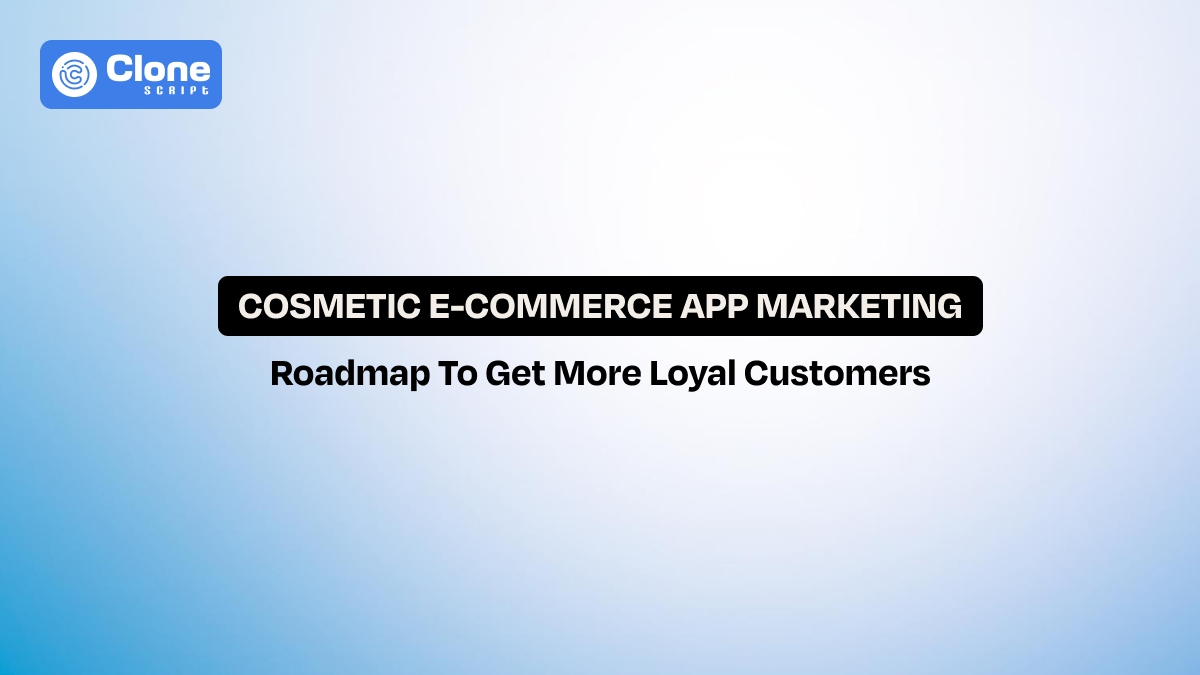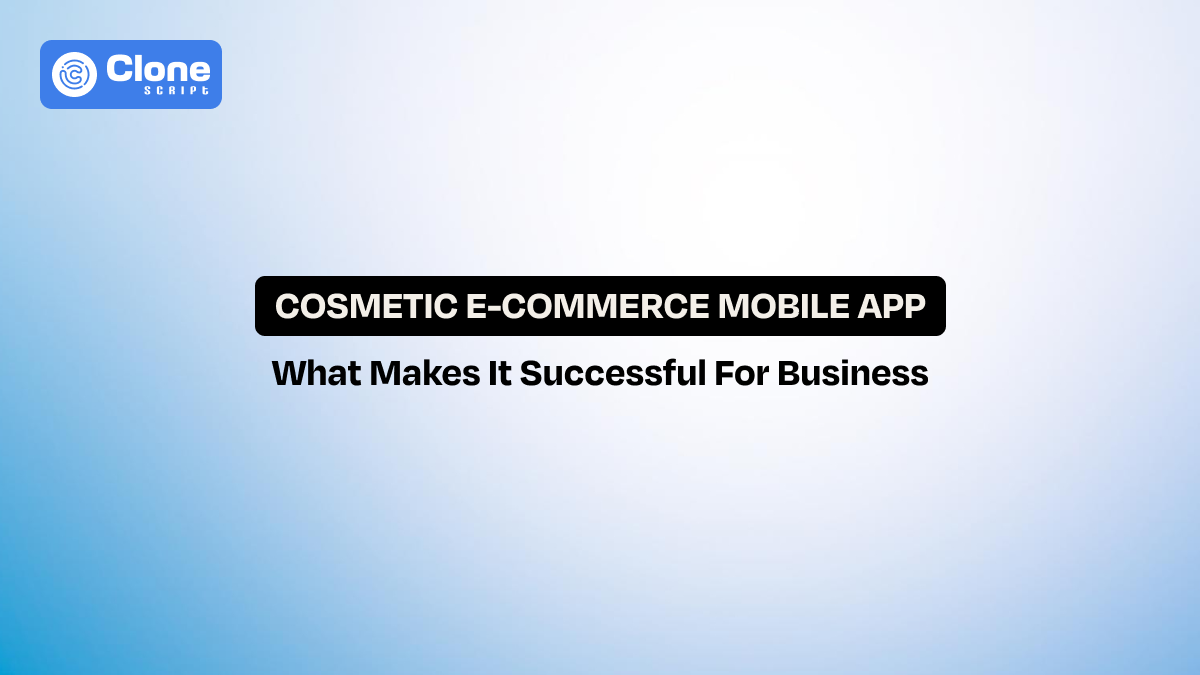8 Key Features Every Successful NFT Marketplace Website Must Have
Non-Fungible Tokens, referred to as NFTs, are considered a profitable venture to start on as cryptocurrency adoption reaches new heights. In a research study, in only 2022, the NFT market recorded over $25 billion in transaction volume, a 10x of any underdeveloped country's GDP.
These huge numbers only happen due to the NFT marketplace website features. From smooth navigation and wallet integration to advanced search and payment systems, every feature contributes to user trust and platform credibility. This article explores the features of an NFT website that can help developers create a reliable, future-ready platform that stands out in a crowded market.
1. User-Friendly Interface and Navigation Win Initial Attention.
A smooth and intuitive interface is the key to any successful NFT marketplace website. The successful websites always prioritize having the best design based on user retention. Ignoring this fact can be the worst situation for the brand. According to Statista, 80% of users abandon sites with poor navigation (e.g., purchasing products in 8 steps instead of 3). Referring to the NFT platform, clarity and simplicity bring more users on board.
Key considerations for a focused approach:
-
Clean Layouts: Avoid clutter. Showcase featured collections, trending NFTs, and user dashboards clearly.
-
Easy Navigation: Menus should be logical, allowing users to quickly access marketplaces, their profiles, or wallet integration sections.
-
Responsive Design: The platform must function seamlessly across devices, especially mobiles, where a significant portion of NFT traffic originates.
-
Microinteractions: Subtle animations and visual cues improve usability and make the experience feel professional.
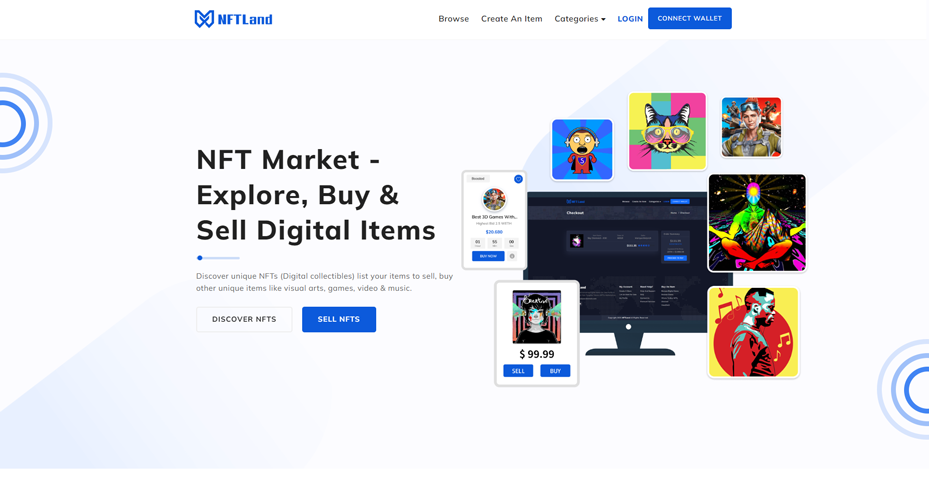
If you don’t want to be involved in designing the entire site manually, then you can go with the NFT marketplace UI/UX templates. These templates are not just helping in designing the site, but are also ready with the code that makes the development cycle smooth and properly managed.
The user-friendly interface is beyond the aesthetic look. It directly connected engagement, trust, and transaction success on the platform.
Secure User Authentication Can Create Trust.
Security is one of the most critical aspects of any NFT marketplace website, especially when dealing with high-value digital assets and sensitive user data. Without strong authentication, the platform becomes vulnerable to hacks, fraud, and unauthorized access.
For developers, implementing secure user authentication isn’t optional—it’s essential to protect both buyers and sellers and establish platform credibility.
Key Practices for Secure Authentication:
-
Multi-Factor Authentication (MFA): Requiring a second verification step (such as an SMS code or authenticator app) reduces the risk of account compromise.
-
Decentralized Identity (DID): Emerging technologies allow users to control their identity without centralized databases, removing privacy concerns and improving security.
-
OAuth Integration: Supporting login through wallets like MetaMask or Coinbase Wallet lets users sign in without creating separate platform accounts. It can improve security.
-
Email Verification and CAPTCHA: Basic yet important layers that prevent automated bot registrations and ensure valid users.
A properly secured authentication process also supports escrow functionality by confirming the identities of both parties involved in a transaction. This reduces the chances of fraud or disputes down the line.
Developers can use frameworks and NFT website templates with wallet integration that already come pre-built with authentication modules, speeding up development while adhering to security best practices.
Ultimately, strong authentication is not just about protecting accounts—it’s about making users feel confident that their digital assets are safe.
Integrated Digital Wallets Keep NFT Trading Alive and Secure.
At the heart of every NFT marketplace is the digital wallet. It’s not just a place to store cryptocurrencies—it’s the user’s gateway to interacting with the entire blockchain ecosystem. In NFT marketplace website development, wallet integration must be seamless, secure, and flexible enough to support various blockchain networks.
Why Wallet Integration Matters?
Users expect their wallet to work immediately with the platform and without complicated setups or extra steps. If connecting a wallet feels cumbersome, users won’t stick around. A well-integrated wallet allows them to:
-
View balances in real time.
-
Manage NFTs they’ve purchased or minted.
-
Initiate buy, sell, or transfer actions directly from their wallet.
Practical Development Tips:
-
Support popular wallets first: MetaMask, Trust Wallet, and Coinbase Wallet cover the majority of users.
-
Make use of Web3 protocols for integration. Libraries like web3.js or ethers.js simplify connecting wallets to your frontend and backend services.
-
Allow users to connect multiple wallets. Some may use MetaMask for Ethereum and Trust Wallet for Binance Smart Chain.
-
Display real-time wallet information such as ETH balance and transaction history, so users don’t need to leave the platform.
In short, wallet integration is not just a feature—it’s the core that determines how smoothly your marketplace functions. Developers who get this right enable users to transact confidently and without friction.
NFT Minting Functionality Keeps Platform Competitive.
An essential feature of any serious NFT marketplace is the ability for users to mint NFTs directly on the platform. Minting turns digital content—whether it’s art, music, or collectibles—into blockchain-based assets that can be bought, sold, or traded. Building an efficient and reliable minting system is critical to attracting creators and keeping them engaged.
Why Minting Matters?
Without built-in minting, creators must rely on external services or complex tools, which adds frustration and can drive them away. An integrated minting process keeps everything in one place, improving usability and reducing the technical barrier for non-expert users.
Core Components of NFT Minting Functionality:
-
File Upload Interface: Allow users to upload images, videos, audio files, or any digital goods with clear instructions about supported formats and size limits. The system should validate the upload and show previews immediately.
-
Metadata Management: After uploading files, users should fill in relevant metadata—such as title, description, category, and custom attributes (e.g., rarity level or artist notes). This metadata is helping with search and filter functionality later.
-
Royalty Settings: Allow creators to set royalty percentages that are automatically paid out on secondary sales. This must be written into the smart contract during the minting process to ensure automated execution.
-
Blockchain Selection: Offer users the ability to mint NFTs on supported blockchains like Ethereum, Polygon, or Binance Smart Chain. Developers must handle the logic to switch between chains depending on the user’s choice.
-
Smart Contract Interaction: Once all information is filled, the platform should trigger a smart contract call that handles minting the NFT, generating a unique token ID, and storing metadata in decentralized storage (e.g., IPFS). The process must provide clear feedback to the user—transaction in progress, success, or failure.
-
Minting Cost Display: Gas fees or platform service fees must be clearly displayed before minting begins so the user knows the total cost upfront.
Developer Best Practices
-
Use standardized token standards like ERC-721 or ERC-1155, depending on whether the NFTs are unique or semi-fungible.
-
Handle large file uploads asynchronously, store files in IPFS, and link the content hash in the metadata to reduce on-chain storage costs.
-
Provide detailed error handling—such as insufficient gas, file upload errors, or rejected transactions—so users aren’t left in the dark.
-
Ensure the front-end development provides a smooth experience, showing minting progress and transaction confirmations without requiring page reloads.
A well-built minting system simplifies the creator’s workflow and makes the platform attractive. It manages the minted NFTs to be standardized, searchable, and ready for trading or listing immediately after creation.
Search and Filter Options Drive Conversions.
An NFT marketplace can quickly grow to host thousands or even millions of digital assets. Without a powerful and flexible search and filter system, users will struggle to find the NFTs they’re interested in, which leads to frustration and drop-offs. For developers building an NFT marketplace website, implementing efficient search and filtering is crucial for usability and performance.
Why Search and Filtering Are Critical?
A user-friendly marketplace isn’t just about showing popular or trending NFTs. Users expect to search by keyword, filter by price, collection, creator, category, and other attributes. According to Forrester, over 50% of users abandon websites due to poor search functionality.
Core Features to Implement:
-
Full-Text Search:
Implement a search system that indexes NFT titles, descriptions, creator names, and metadata fields, allowing users to search freely without needing exact matches.
-
Advanced Filtering Options:
Users should be able to narrow results using:
-
Price range (ETH, USD, other tokens)
-
Category (Art, Collectibles, Music, Virtual Land)
-
Creator or Collection
-
Blockchain type (Ethereum, Polygon, BSC)
-
Rarity or special attributes (limited edition, unique traits)
This can help them to find what they’re looking for.
-
Sorting Options:
Allow sorting the NFTs by the options:
-
Newest listings
-
Highest price
-
Lowest price
-
Most viewed
-
Most favorited
It is very useful for sellers to identify the most sold assets and buyers to determine which kind of digital assets are in demand.
-
Autocomplete and Suggestions:
As users type in the search bar, provide real-time autocomplete suggestions based on popular searches or existing asset titles to speed up the search process.
Search and Filter Implementation Tips for Developers:
-
Use a powerful search engine like Elasticsearch or Algolia to handle large volumes of NFTs efficiently and return results in milliseconds
-
Store metadata in a structured database (PostgreSQL, MongoDB) that supports fast querying and indexing.
-
Ensure that filters don’t overload the backend. Apply lazy loading or pagination to return results in chunks and avoid performance problems.
-
Display clear, real-time feedback—e.g., “No results found” when the query doesn’t match, and highlight applied filters to let users remove them easily.
Good search and filter functionality makes the difference between a marketplace where users browse passively and one where they find exactly what they want, fast. For developers, building this correctly from the start makes the platform stay fast and usable even as listings grow into the millions.
Multiple Payment Gateways Allow Complete Transactions.
As we know, NFT buying and selling platforms only allow crypto payments through Web3 wallets. However, other payment options are still considered winners in grabbing a massive audience. Since the crypto value volatility is very significant, the FIAT currency users may not trade the digital assets. So, different payment methods should be available on the platform through gateway integration.
Why Multiple Payment Options Matter?
Limiting payments to only crypto can alienate potential users who are not familiar with wallets or tokens. Integrating various payment methods improves flexibility, helps onboard less technical users, and enhances the overall user experience.
Essential Payment Gateway Features for Developers:
-
Cryptocurrency Payments: Support direct payments using major cryptocurrencies such as ETH, BNB, USDT, and more. Integrate smart contract calls to automatically verify and confirm transactions on the blockchain.
-
Fiat Payment Options: Integrate services like Stripe, PayPal, or other local payment processors to accept credit/debit card payments. This is crucial for users unfamiliar with crypto wallets but interested in buying NFTs.
-
Multi-Chain Support: Offer payments on multiple blockchains (Ethereum, Polygon, BSC), allowing users to select the network based on their preference or lower transaction costs.
-
Payment Confirmation Feedback: Every payment action should include clear UI feedback—transaction pending, confirmed, or failed, with detailed error messages when necessary.
-
Dynamic Gas Fee Display: Show real-time estimates of gas fees before users confirm payment to prevent unexpected high costs.
Developer Implementation Tips:
-
Use APIs from well-established payment processors for fiat support to ensure compliance and security (e.g., PCI DSS standards).
-
For crypto payments, integrate libraries like ethers.js or web3.js to handle smart contract interactions reliably.
-
Store payment states in the backend database (pending, confirmed, failed) to synchronize UI updates and enable manual review if needed.
-
Implement webhooks or event listeners for blockchain transactions to track payment confirmations in real time.
With multiple payment gateway integrations, users can pay the amount through credit card and MetaMask wallet as per their preferences. So, everyone can experience a secure, transparent, and advanced option.
Rating and Review System Increases Website Usability.
On any website, the rating and review system works as a signal to help new users make informed decisions. An NFT trading site is not exempt from this. Having digital assets with high value and a unique proposition, the traders judge the products wisely. Also, getting proper feedback can improve overall security and user experience.
Why Ratings and Reviews Matter?
According to BrightLocal, 77% of customers trust online reviews for personal recommendations. Talking about NFTs, as they have a unique and irreversible value, the rating can help users to acknowledge the creator's reputation.
Core Components of a Rating and Review System:
-
Verified Reviews: Ensure that only verified transactions (completed NFT sales) can generate reviews. This prevents fake reviews and boosts credibility.
-
User Reputation Score: Display a simple reputation score for each user based on completed transactions, ratings, and the number of successful sales or purchases. This provides a quick trust signal.
-
Detailed Review Comments: Allow buyers to leave detailed comments about the asset quality, delivery process, communication, and overall experience.
-
Flagging System: Include a mechanism to flag suspicious or inappropriate reviews for moderation. This keeps the review section clean and trustworthy.
-
Display in Search and Listings: Show average ratings and review counts directly in search results and NFT listings, giving users an at-a-glance view of seller reliability.
Developer Best Practices:
-
Store reviews and ratings in a separate database table linked to verified transactions to maintain data integrity.
-
Implement pagination or lazy loading in the review section to keep page performance proper.
-
Use asynchronous data fetching so that reviews don’t slow down the main NFT listing pages.
-
Provide easy tools for users to edit or delete their own reviews, improving fairness and control.
A properly implemented rating and review system doesn’t just improve credibility—it becomes a key differentiator in a crowded NFT marketplace. Users won’t hesitate to trust and transact when they can see real feedback from others in the community.
Scalability and Security make an Advanced Website.
Building an NFT website that works smoothly today isn’t enough. As the platform grows—handling thousands of users and millions of transactions—scalability and security become important. Developers must design the system to handle increasing load without sacrificing performance, while protecting users and digital assets from threats.
Why Scalability Matters?
NFT marketplaces can experience sudden traffic spikes during high-profile drops or viral collections. Without a scalable architecture, the system will slow down or crash, resulting in frustrated users and lost revenue.
Scalability Best Practices for Developers:
-
Microservices Architecture: Break the application into small, independent services (user management, search, wallet connection, payments) that can be scaled independently.
-
Cloud Infrastructure: Use cloud platforms like AWS, Google Cloud, or Azure, which allow dynamic resource allocation based on traffic.
-
Efficient Database Design:
-
Index key data fields (token IDs, creator address, categories) for fast lookup.
-
Use NoSQL databases like MongoDB or scalable relational databases like PostgreSQL with partitioning.
-
Caching Layer: Implement caching (Redis or Memcached) for frequently accessed data like top-selling NFTs or user profiles to reduce database load.
-
Asynchronous Processing: Use job queues (e.g., RabbitMQ, Celery) for heavy operations such as metadata processing, image resizing, and transaction monitoring to avoid blocking the main request flow.
Why Security Is Non-Negotiable?
NFTs represent real digital value, and the marketplace is a target for hackers, phishing attacks, and smart contract exploits. Security must be built in from the ground up.
Key security measures include:
-
Smart Contract Audits: Before deploying minting or escrow-related smart contracts, conduct third-party audits to ensure no vulnerabilities exist (reentrancy attacks, unchecked transfers, etc.).
-
End-to-End Encryption: Encrypt sensitive user data (emails, private keys, transaction logs) both in transit (using HTTPS) and at rest.
-
Rate Limiting & DDoS Protection: Protect APIs with rate limits and use services like Cloudflare to prevent DDoS attacks.
-
Regular Security Patches: Keep all dependencies, frameworks, and node versions up to date with security patches.
Monitoring and Maintenance
-
Implement logging and alert systems to monitor unusual activity or failed transactions.
-
Build an admin dashboard to track system health, pending transactions, and user complaints in real time.
Without a focus on scalability and security, even the most feature-rich NFT marketplace website will crumble under high traffic or targeted attacks. Developers who plan to create resilient platforms that serve users reliably as they grow.
Conclusion
Creating an effective NFT marketplace website goes far beyond simply enabling users to buy and sell digital assets. It’s about building a platform that is secure, intuitive, and scalable—designed to support creators, collectors, and investors in a seamless experience. Essential features like streamlined NFT minting, flexible payment options, advanced search, and robust user authentication are the building blocks that ensure long-term success.
Every feature should be carefully crafted with real-world usage in mind, focusing on speed, reliability, and trust.
As the NFT market continues to expand, how will your marketplace stand out in such a competitive landscape? Add these features.
FAQs
-
What blockchain standards should I use for NFTs?
Use ERC-721 for unique NFTs and ERC-1155 for semi-fungible tokens (e.g., limited edition items). These standards are well-supported and ensure compatibility across wallets and marketplaces.
-
How do I handle gas fees for minting and transactions?
Display real-time gas fee estimates before users confirm minting or transactions. Offer layer-2 solutions like Polygon to reduce costs. Allow users to choose their preferred network depending on speed and fee structure.
-
Can I support multiple blockchains in one NFT marketplace?
Yes. Implement a multi-chain architecture allowing users to mint, buy, and sell NFTs across supported networks (Ethereum, Polygon, BSC). This increases flexibility and lowers gas costs while reaching a broader audience.
-
How do I ensure that NFT ownership is tracked reliably?
Track ownership by recording the token ID, creator address, and current owner on-chain. Query the blockchain (using RPC providers like Infura or Alchemy) in real time to verify ownership instead of relying solely on off-chain databases.
-
How can I prevent duplicate or fake NFT listings?
Implement checks to validate the uniqueness of metadata during minting. Use image hash comparison (IPFS CID or perceptual hashing) to detect duplicate files and prevent the same NFT from being minted multiple times.
-
What should I consider when implementing royalties in NFTs?
Use smart contracts to encode royalty percentages, ensuring they automatically execute on secondary sales. The platform should prevent users from bypassing this by disabling direct peer-to-peer transfers outside the platform.
-
How should I manage transaction history for users?
Store a full transaction history (minting, buying, selling, transferring) linked to user wallets. Allow users to view past activity in their dashboard, showing timestamps, asset details, and transaction status.
 BTC - Bitcoin
BTC - Bitcoin
 USDTERC20 - USDT ERC20
USDTERC20 - USDT ERC20
 ETH - Ethereum
ETH - Ethereum
 BNB - Binance
BNB - Binance
 BCH - Bitcoin Cash
BCH - Bitcoin Cash
 DOGE - Dogecoin
DOGE - Dogecoin
 TRX - TRON
TRX - TRON
 USDTTRC20 - USD TRC20
USDTTRC20 - USD TRC20
 LTC - LiteCoin
LTC - LiteCoin

